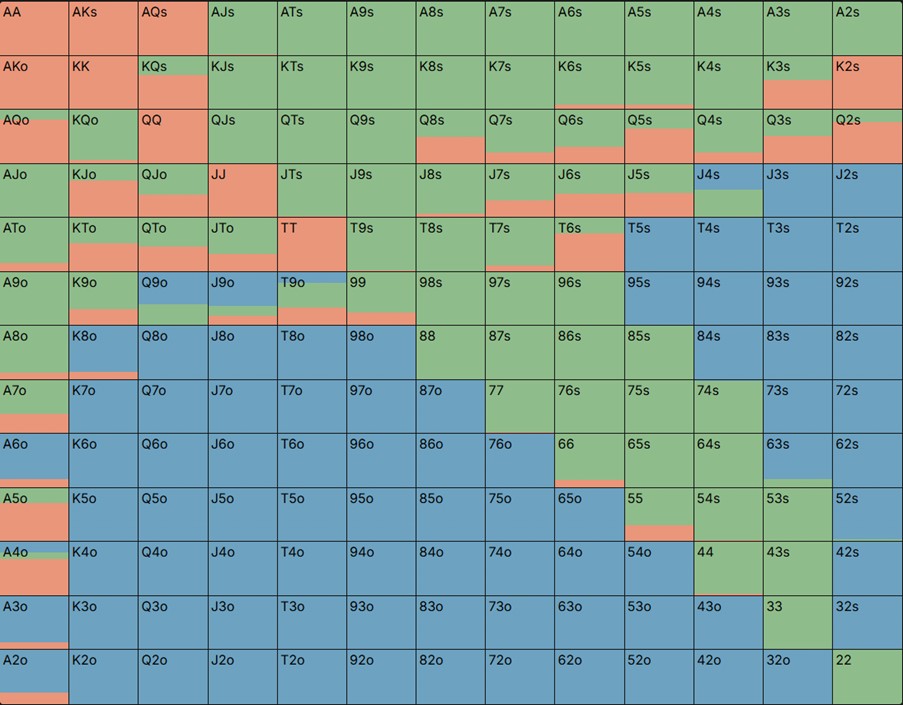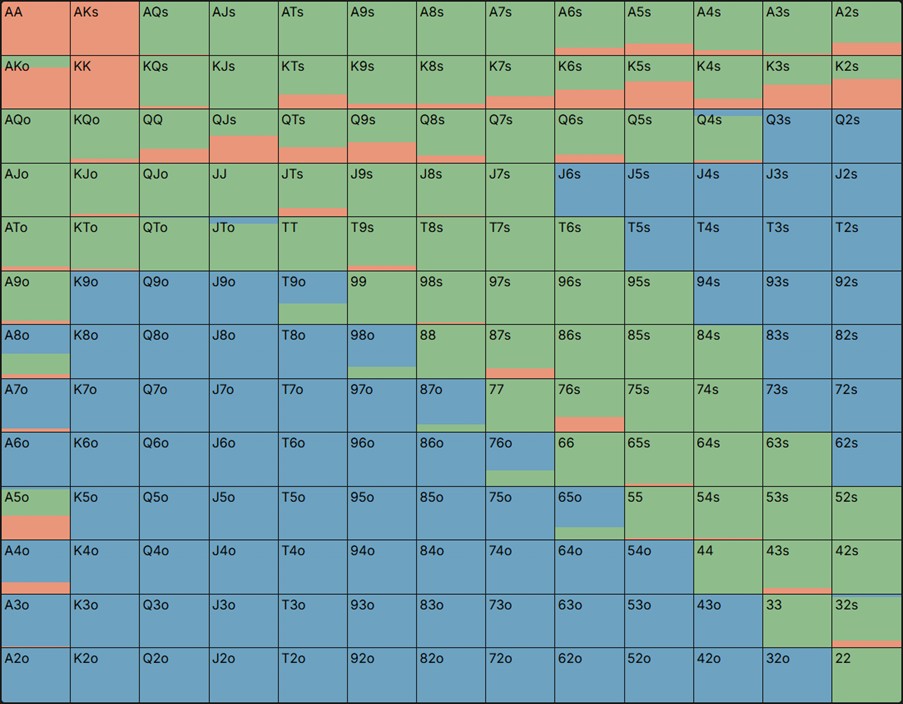A common leak, according to a database of poker regulars (regs), is a lack of 3bet aggression from the Big Blind (BB).
We can further divide BB 3betting into two broad categories:
- 3betting against opponents who are IP (BTN and earlier)
- 3betting against the SB
In this article, we’ll discuss how we can improve our strategy in the first scenario: 3betting against opponents who are in position relative to us.
BB 3betting Range vs BTN 2.5x Open
Let’s start by imagining we are facing a 2.5x BTN open from the BB in a Texas Hold’em game. In this instance, we should defend just under 40% of the time.
The precise defending strategy will depend on the game tree (so solves differ for the same spot).
However, we expect something along the following lines:
- Cold Call ~26.8%
- 3bet ~12.8%
Many regs might have closer to 8% 3bet from this spot rather than 12.8%. Poker training schools often emphasise the importance of 3betting aggressively from the SB but may not adequately cover BB 3bet strategies.
We can roughly divide our BB 3betting strategy into the following two categories:
- Value region consisting of TT+, AQs+, KQs, AQo+
- Semi-bluff region consisting of off-suit aces, suited high cards and off-suit broadways

It's also worth noting that the 3bet semi-bluff region is influenced by rake structure.
In games with lower rake (usually higher-stakes games online), the 3bet semi-bluff region shifts towards suited connectors, such as 65s, rather than suited high cards.
BB 3betting Range vs UTG Min-Raise
Let’s compare our 3betting GTO poker strategy against a late position open to our 3betting strategy against a UTG open on a 6-handed table.
We'll assume UTG min-raises, as small sizings from early positions have become increasingly common in modern poker.
We expect calling frequencies that look like the following -
- Call ~31%
- 3bet ~5.2%
It might seem odd that we cold call more often against the UTG open (31%) than against the BTN open (26.8%). However, this strategy arises because we are dealing with a smaller open raise sizing.
Additionally, the overall defending frequency remains tighter against the UTG open, as we are now only 3betting 5.2% of the time.

The overall approach to 3betting in a poker hand remains similar, just tighter:
- Our value region is now the following hands, QQ+/AK
- While our semi-bluff region is off-suit aces, suited high cards and some suited broadways.
- Our suited high cards are now mostly Kxs/Axs rather than Kxs/Qxs, which we used against the BTN open.
While we see some suited connectors creeping into the semi-bluff region at high rake structures, they make a more significant appearance in low rake structures.
The simple takeaway regarding rake structures is that holding a high card is more valuable in lower-limit games (assuming the rake is proportionally higher at lower-limit games).
Adjustments to GTO Strategies
Most opponents are likely folding less than they should when facing a 3bet. In specific types of poker games, the logical adjustment is to push our semi-bluff region towards stronger holdings.
For example, in the BB vs BTN formation, we might prefer to 3bet K8s rather than K2s, etc.
A smaller number of opponents will fold too frequently when facing a 3bet.
If we notice an opponent folding more than 65% of the time against 3bets, we can push our semi-bluff region weaker and wider.


